Going Green
Sustainability is our core. Our quest for a better future got us here. The whole idea of sustainability provides us with the satisfaction and relief that we are not only catering to this generation but are also taking care of the generations to come.
What is sustainable construction?
Sustainable construction or green buildings are the future of the real estate industry. Let us explain to you quickly what is sustainable or green building. Sustainable construction is all about using renewable and recyclable materials when building new structures, as well as reducing energy consumption and waste. The primary goal of sustainable construction is to use green products and use construction methods that reduce carbon emissions and its impact on the environment.
How can a project be a green building?
Buildings need to comply with a few very important norms and rules to be considered as green building some of which are: minimum wastage, using recyclable and reusable materials, conserving energy and most important is using green products and other sustainable materials.
Why should everyone adapt sustainable and green buildings?
we assure you by adapting and promoting these items or using sustainable and green ways to manufacture your respective products will be accepted and appreciated by every segment of market as it does not put monitory pressure on budget and mainly it is the undisputed future of real estate. builders and developers will choose green products over every other available product, as by using green roofs and floors and other green products the builders and developers get bonus points which gets them under the umbrella of green building.
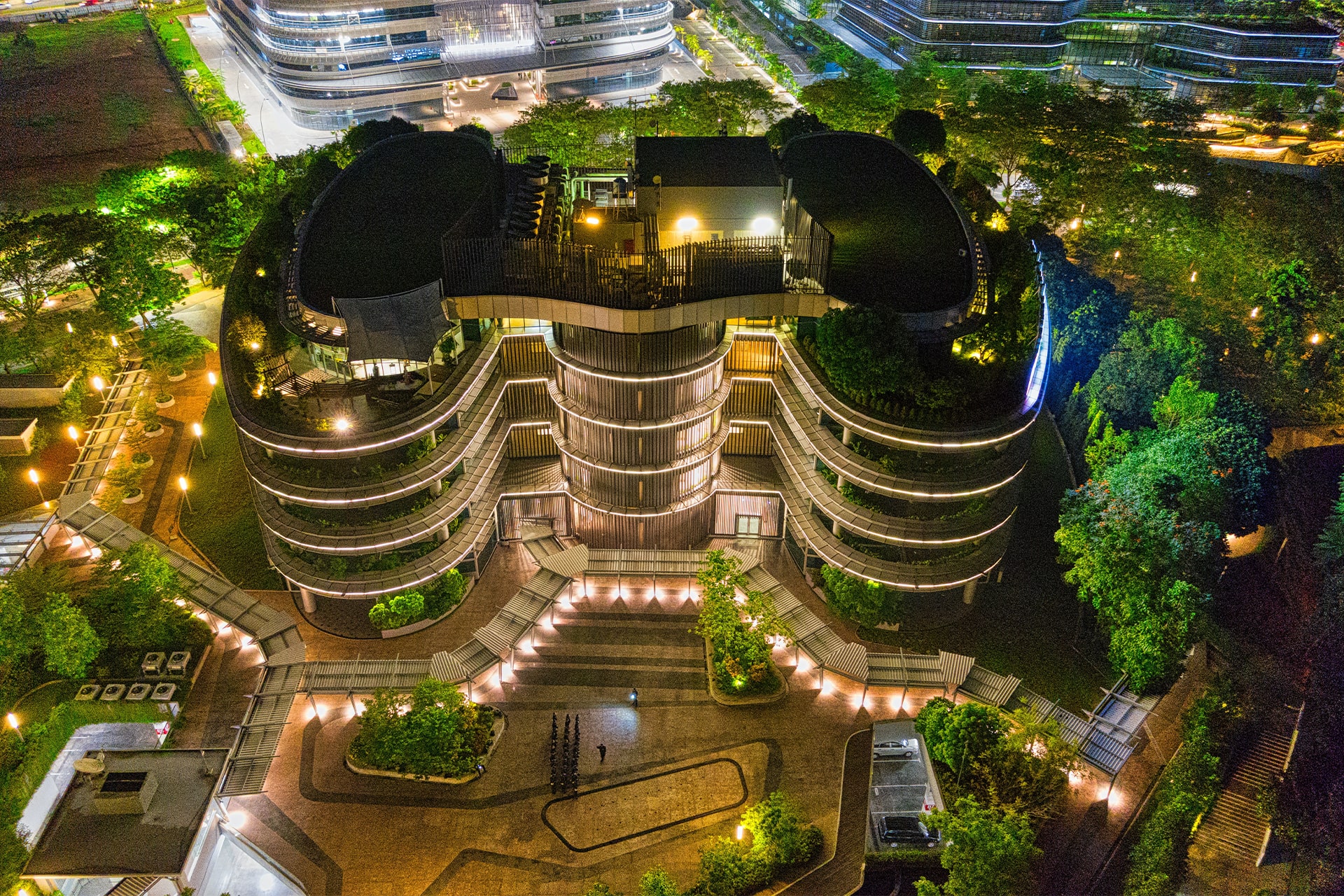


What is sustainable construction?
Sustainable construction or green buildings are the future of the real estate industry. Let us explain to you quickly what is sustainable or green building. Sustainable construction is all about using renewable and recyclable materials when building new structures, as well as reducing energy consumption and waste. The primary goal of sustainable construction is to use green products and use construction methods that reduce carbon emissions and its impact on the environment.
How can a project be a green building?
Buildings need to comply with a few very important norms and rules to be considered as green building some of which are: minimum wastage, using recyclable and reusable materials, conserving energy and most important is using green products and other sustainable materials.
Why should everyone adopt sustainable and green buildings?
we assure you by adapting and promoting these items or using sustainable and green ways to manufacture your respective products will be accepted and appreciated by every segment of market as it does not put monitory pressure on budget and mainly it is the undisputed future of real estate. builders and developers will choose green products over every other available product, as by using green roofs and floors and other green products the builders and developers get bonus points which gets them under the umbrella of green building.
Why Green Buildings are so important?
The war is with the unknown when it comes to Humans vs. Nature, the point is, it is totally unnecessary if we decide to settle for a middle ground. Nature has been always helpful to the evolution of human developments and now it’s our time to pay back by switching to sustainable development. It is important to acknowledge that the construction business in itself is highly diversified when it comes to using natural resources. Construction uses almost 50% of global energy, 50% of water, 60% of materials for buildings, and leads to 80% land loss to agriculture which is pretty enough reason to switch towards a new way of doing the old work. Construction of new buildings is inevitable as the population will keep on increasing with its basic demand for shelter.
For a country like India with a population of 138 crores (2020) and the national capital stated as the most polluted capital of the world by TOI, green buildings can surely add up to bring a new change. According to World Air Quality Report 2021, 35 cities in India are covered under the 50 worst air-quality cities in the world is an indication of our lack of competence when it comes to developing a better world for the next generations to come. This is one aspect of the problem. The other one is the soil on which the construction of buildings is taking place. Soil degradation is gradually increasing, around 52% of agricultural land is already degraded and sooner the percentage will increase if we do not take the required measures.
Green Buildings are here to provide us with an opportunity to transform the mistakes of the past as the essentials of constructing these buildings are eco-friendly in every possible way. Even the steps of constructing these sustainable buildings are highly in favour of Nature. Currently, India ranks second in terms of green building construction projects and built-in areas which shows the change the real estate industry will be going through in the near future. It is more about creating a safe and better world to live together than anything else.
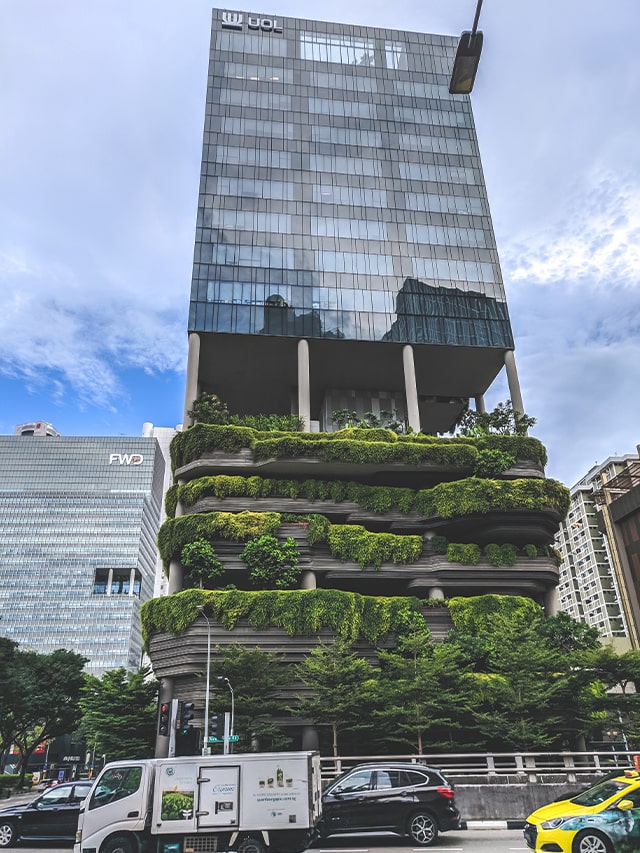
Sustainable Building Materials and their Usability
The concept of Green buildings is deeply linked to high performing building which uses less water, and energy, generates less waste, maintains indoor air quality for the occupants and uses efficient building materials. According to GRIHA, building activities contribute an estimated 50% of the world’s air pollution, 42% of its greenhouse gases, 50% all water pollution, 48% of all solid wastes and 50% of all Chlorofluorocarbon CFCs to the environment. (GRIHA Manual Volume-1,2010) This calls for the revolution in the construction industry and one way to move towards this revolution is to ensure the promotion of sustainable buildings. There are a few components to be kept in mind while constructing the green buildings which are-
- The need to bring material efficiency where sustainability will be a prime concern.
- Water, being an important part of our livelihood, needs to be taken care of by enabling low flow plumbing fixtures, rooftop rain harvesting, porous paving system and other such measures.
- Managing the energy provided to the green building through different measures such as smart lighting will also add to sustainability.
- Ensuring proper ventilation and using microbial resistant materials will enhance the indoor air quality of the building which is a required step toward uplifting the living standards of the people.
- Designers are also required to build a proper waste management system for the benefit of humans and Nature.
The LEED (Leadership in Energy and Environmental Design) rating system is quite useful to understand the wide range of opportunities in construction, architecture and engineering design, building materials and equipment manufacture coming along with this revolution. Currently, India includes around 1239 registered buildings, and 187 certified buildings with an 855.96 million sq. ft. Green building footprint and the numbers are growing with the increasing awareness about the importance of sustainable buildings.
With the rise of the revolution, the demand for green building materials is also increasing. They primarily include high-efficiency heating, ventilation and air conditioning (HVAC) systems; low-emission window and daylighting technologies; affordable green building materials with consideration for the life cycle perspective of building costs; water-saving, water efficiency and non-mechanical treatment systems; fire and safety systems and other intelligent building systems, and materials that help to score points under the various IGBC and GRIHA green building rating system.
With the rise of the revolution, the demand for green building materials is also increasing. They primarily include high-efficiency heating, ventilation and air conditioning (HVAC) systems; low-emission window and daylighting technologies; affordable green building materials with consideration for the life cycle perspective of building costs; water-saving, water efficiency and non-mechanical treatment systems; fire and safety systems and other intelligent building systems, and materials that help to score points under the various IGBC and GRIHA green building rating system.
The roofing and flooring segments are the most important ones when planning the green building framework. Thereby, understanding these two sectors can be the right step towards understanding the management and material requirements while constructing sustainable magnificence. There are many eco-friendly roofing options are available in the market. It is the task of the experienced as it involves lifting heavy materials and dealing with great heights. It is important to have the knowledge and skill required to not fail it. The different types of roofing options available are-
White Roof (Cool Roof)
A cool roof is any roof that is light or white in colour, regardless of the material. It reflects the majority of the sun’s rays which provides a cooling impact on a house. Cool roof systems have an added benefit in that the air conditioning will not be needed during the day, resulting in large savings in summer energy expenses.
Standing Steam-metal Roofs
Metal roofs are beneficial not only to environmentally conscious homeowners, but also to anyone wishing to invest in a good roof as they are long-lasting, light-reflective, and 100% recyclable. One can improve it by opting for a lighter-colored metal roof made from recycled materials. In addition, the roof is fire-resistant providing it with an edge over the other roof types.
Shingle Roof
It’s also known as the environmentally friendly wood shake. Wood shingles from a well-managed forest are an excellent choice for individuals looking for a traditional look.
Corrugated Roofing
This is a sturdy and cost-effective green housing design. Corrugated roofing is long-lasting and resistant to the elements. This roof is not made of translucent plastic or a wavy sheet of metal as there are many different hues and styles available nowadays. Because of its adaptability, manufacturers may create a wide range of designs. The roof is light and has a clean appearance and also easy to repair. They are great green building materials for homes due to their durability.
Reclaimed Slate or Clay Roof
Clay and slate tiles have been used for roofing since the dawn of civilization, and they are still in demand. The most environmentally friendly roofing option is reclaimed tiles. A Spanish-style home looks great with a conventional curve of red clay tiles, while slate tiles go well with the elegant aesthetic of historical homes. These roofing materials are both natural and long-lasting. They can live for over a century. There are now light-colored clay tiles available that provide the benefits of a cool roof system as well.
Shingle Roof from Recycled Materials
The majority of today’s shingles are constructed from recycled materials such as plastic, wood fibre, and rubber. The roof is made to look like it’s made of recycled slate and cedar shakes. Recycled shingles are a cost-effective alternative to slate roofs for individuals who cannot afford them. They are long-lasting, with a lifespan of more than 50 years, and the roof provides environmental benefits. Plus, the roof is also attractive, and no one would guess it was created from waste materials. When individuals use this roof, there will be less waste and less demand for fresh raw materials to be processed. As a result, less energy will be used, resulting in less pollution and more sustainability.
Green Roof
Choosing to plant a green roof has unique benefits, particularly in metropolitan areas, as it helps in regulating the heat and purifying the air. Furthermore, a green home design lowers rainwater runoff, providing additional cooling and insulation for the home. It also enhances the appearance of your home with its natural beauty which makes it note-worthy.
Rubber Roofing
An excellent roofing material is reinforced rubber shingles made from old steel-belted tyres. The texture is usually enhanced by a layer of ground slate. Different colour options for the roof and it can withstand storms and other inclement weather with a 50-year life expectancy.
Green Buildings Skeletal Structures
The skeletal framework of a building is responsible for making it sustainable in the long term. Structural engineering is a vital part of constructing a successful green building. 10%-20% of the total cost of the project is dedicated to the cause of planning the right skeleton structure. To be more precise, the skeleton frame of a building is the framed structure used for the construction of multi-storey buildings. The purpose of such a structure is to network, or system the columns and connecting beams that supports the building’s interior floors and exterior walls. It is the base structure of the foundation. While building a green project structure engineer ensures that the framework incorporates recyclability and reusability of materials and systems, promotion of locally available building materials, mindful use of the structural system and a provision for its future adaptability.
Green building structural frameworks usually use the following materials for building an effective structure:
Concrete
The concrete mix consists of slag from steel mills and fly ash which is useful in cutting down the CO2 emissions, making it stronger to resistant to corrosion. It also opens up the scope for recycled aggravate, levitating the agenda for sustainability.
Steel
One of the most recycled materials in the modern construction industry is Steel. Not only this, the energy used to create recycled steel is comparatively lesser than the energy used for creating virgin steel. Steel Structures are also lighter, stronger and have more tensile strength when compared to other structures.
Wood
The reason behind preferring wood structure could be its renewability. Yes, wood is renewable if taken care of while it’s extracted. It also requires a minimal amount of energy-based processing when compared to its other counterparts.
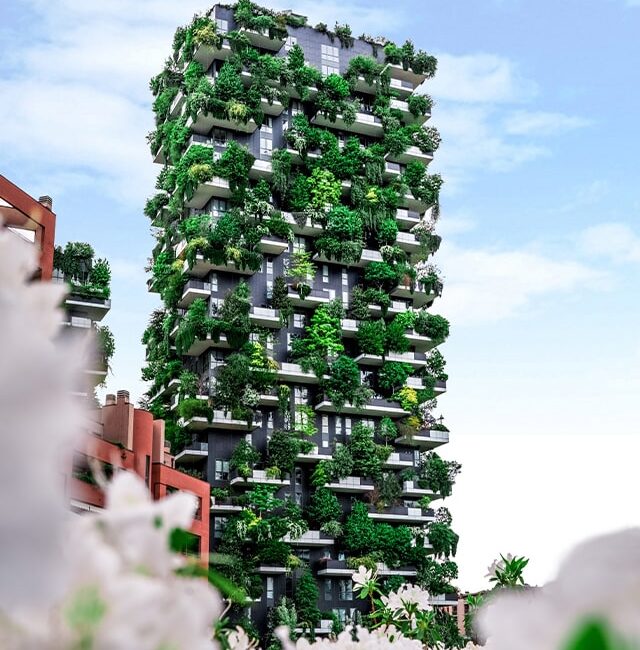
Modern living necessitates the use of flooring. It takes up a lot of room and has a big impact not only on the aesthetics of our surroundings but also on our health and the environment. Pollutants such as volatile organic compounds (VOCs) and poisons are byproducts of many types of flooring, which can be off-gassed into the home and increase indoor pollution. More people are exposed to these pollutants as more of their time is spent indoors, especially vulnerable groups such as children and the elderly. As a result, there is a need to understand the sustainable flooring options available in the market. We have tried to present the first five options along with their pros and cons.
Reclaimed Hardwood
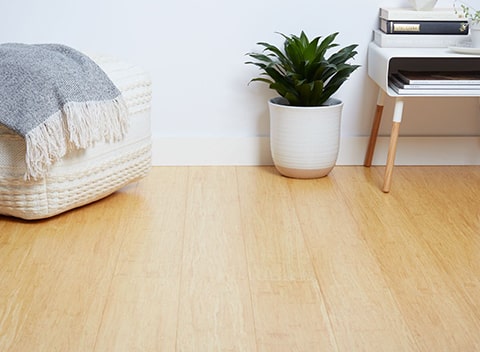
Pros
- Bamboo shoots are a renewable resource that can be harvested every year.
- Recyclable and biodegradable
Termite and fungus-free - The nailing down or floating installation procedure of a bamboo floor requires an underlayment, which can be a sustainable installation process if the underlayment chosen are toxin-free.
- Bamboo is denser than oak, has fewer warps, and is more durable.
High strength for up to 25 years. - Bamboo is quite affordable
- Bamboo has a large capability for carbon absorption.
Cons
- Southeast Asia has a high transportation carbon footprint due to large industry.
- Overuse can result in forests being transformed into bamboo plantations, destroying local ecosystems – this is not the case if bamboo is FSC-certified.
- The use of urea/formaldehyde in the manufacturing process is exceedingly hazardous.
- The use of boilers for carbonization is an unsustainable manufacturing technique (removal of insects, pesticides, etc.)
- VOCs that are harmful and carcinogenic may be released.
- Boilers are required for an energy-intensive manufacturing process.
Cork

Pros
- Anti-allergen helps to keep the air pure and works well with radiant heating on the floor.
- It can employ waste byproducts and limestone, an abundant earth mineral, because it is biodegradable and inert/chemically stable.
- During the day, it absorbs heat and releases it at night.
- Biodegradable, recyclable, and renewable
- The weight of the object necessitates the use of a sturdy structure to support it.
- Improves the quality of the air
- Extremely long-lasting, lasting a lifetime
- It doesn’t scratch or dent, and it’s simple to keep clean.
- Temperature control: During the day, it absorbs heat and then releases it at night.
Cons
- CO2 is produced as a result of an energy-intensive manufacturing process.
- It could be a difficult surface to walk on, especially for children and the elderly.
- If not installed properly, it is susceptible to dampness and can result in cracks.
- Toxic colouring chemicals are sometimes utilised.
Reclaimed Hardwood
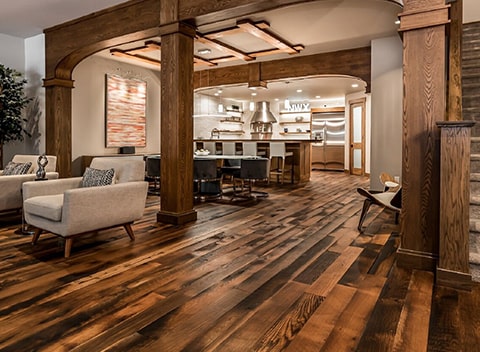
Pros
- Improves indoor air quality and is non-toxic.
- Manufactured with a low carbon footprint
- Extremely long lasting
- Points towards LEED certification are possible.
Cons
- Mold, chemicals, insects, and potentially dangerous compounds may have been exposed to reclaimed wood.
- Toxic adhesives are frequently used in installation alternatives. There are alternatives to employing adhesives, such as using interlocking joints or anchoring the flooring. Non-toxic adhesives are also an option.
- Excess wetness, scratches, dents, and termite assaults can all ruin your furniture.
- It’s a little pricey.
Virgin Hardwood
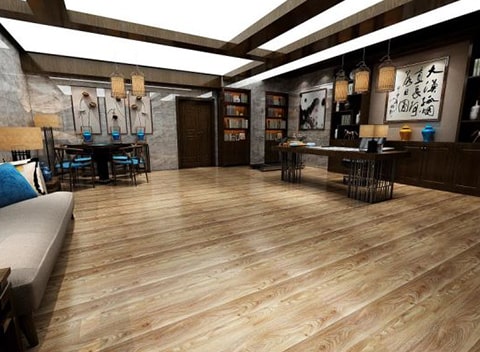
Pros
- Improves indoor air quality and is non-toxic.
- Extremely long-lasting.
- Points towards LEED certification are possible.
- When compared to reclaimed wood, it does not carry the same risk of being exposed to moulds, chemicals, insects, or toxic compounds.
Cons
- Toxic adhesives are frequently used in installation alternatives. There are alternatives to employing adhesives, such as using interlocking joints or anchoring the flooring. Non-toxic adhesives are also an option.
- Excess dampness, scratches, dents, and termite assaults can all cause the wood to rot.
- Harvesting/manufacturing of Virgin Hardwoods has a higher carbon impact than salvaged wood peers.
Cork
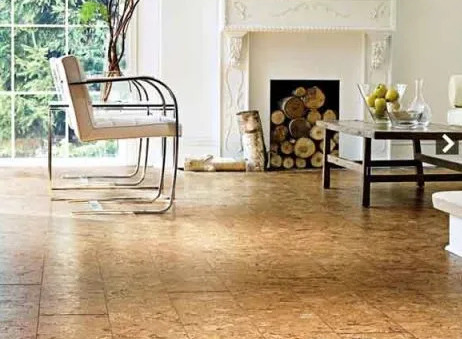
Pros
- Anti-microbial, anti-allergen, and insect repellent characteristics
- Global warming is combated via a sustainable harvesting procedure.
- Carbon footprint is really low.
- Manufacturing process that produces no waste
- Assists in obtaining LEED certification points
- The installation procedure is as follows: Due to the possible toxicity of adhesives, the floating approach is favoured over the glue-down process.
- Foot support with a soft cushioning effect
- It’s less expensive than wood.
Cons
- Because of the risk for warping, it’s best used in humidity levels of 30-60%.
- The use of boilers to prepare cork contributes to the carbon impact.
- Cork is susceptible to scratching, indentations, and damage from pets with long nails.
- Cork is susceptible to fading when exposed to sunshine.
- Less long-lasting, with a lifespan of 10 to 30 years.
- Cork comes almost entirely from Portugal and Spain, leading to a hefty CO2 transportation cost.
Certification for Green Buildings
The necessity of Green buildings is very evident with all the upsides pointed out till now but it is also important to showcase its authenticity. For that very purpose, IGBC Rating System is used. IGBC stands for Indian Green Buildings Council whose aim is to bring the green building revolution to India. It was formed in 2001 as a part of the Confederation of Indian Industry (CII). There are a total of four levels of certification under IGBC: Platinum (Score: 81-100), Gold (Score: 71-80), Silver (Score: 61-70), and Certified (Score: 51-60)[6]. These are provided on the basis of certain credits obtained when a number of criteria get fulfilled. Those mandatory criteria are:
- Sustainable Design
- Water Management
- Energy Efficiency
- Indoor Comfort
- Use of Green Building Materials
The roofing and flooring segments are the most important ones when planning the green building framework. Thereby, understanding these two sectors can be the right step towards understanding the management and material requirements while constructing sustainable magnificence. There are many eco-friendly roofing options are available in the market. It is the task of the experienced as it involves lifting heavy materials and dealing with great heights. It is important to have the knowledge and skill required to not fail it. The different types of roofing options available are-
Conclusion
India is growing rapidly in this sector. The future of green buildings looks impressive for our nation. It will not only help in increasing the health and sanitation of our people but will save energy and ensure that everyone has a roof over their head because of its affordability. The concept of sustainable development is about taking the right steps today without sacrificing the resources of the future, green buildings can ensure the growth of the economy without causing the same exploitation and annihilation faced by many due to unsustainable construction.
We live in a diversified country and not everyone is as lucky as you and I. The purpose of promoting the construction of green buildings will ultimately help everyone to live peacefully with their natural environment. The real-estate business is growing exponentially worldwide and is expected to provide equal employment and living opportunities for all. Our vision is to educate the new buyers and help them choose the best for themselves and their generations to come in terms of their home, and their legacy.
We are doing our part by bringing the best opportunity in the green building transformation for a better world, now it’s your time to take the lead from here.
References
- Global Movement to Save Soil
- Times of India Report on 35 of 50 cities with worst air quality in India
- Structure Engineers and Green Building
- Researchgate Article on Sustainable Building Materials used in Green Buildings
- Green Building: Going Green Concept on Rising in India
- Green Building Certification for Residential Buildings
